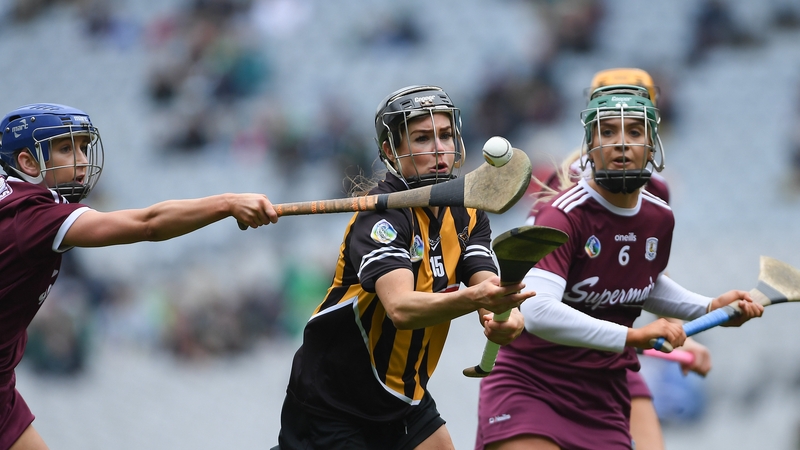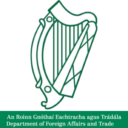Camogie (ka-moe-gi) is an Irish team sport sport played with a wooden stick (hurley) and a small ball (a Sliotar).
It is very similar to the men’s version, hurling, but has a few key differences, mostly relating to scoring and tackling.
It shares a number of features with Gaelic football, such as the field and goals, number of players, and much terminology.
It is typically played between two teams of 15 players on a rectangular grass pitch, although here in North America we play smaller sized games to suit the smaller sports facilities available.
Positions in Camogie are similar to that in other team games codes, and comprise one goalkeeper, six defenders, two midfielders, and six forwards, with a variable number of substitutes. These numbers will change depending on the size of the field available.
Typically, we play with seven a side when playing indoor during the winter, and nine a side when playing outdoors during the summer and autumn months.
How to Play
- Unlike in other games, where players from each team line up in their own half, Hurlers players start a game positioned on either side of the half, and pair themselves with an opposing team’s player. For example, the midfielders from each team will line up together at the centre-line of the field. The forwards will position themselves in front of the opposing team’s goal, and the fullbacks will line up beside the opposing team’s forwards. Defensively speaking, you are now paired with a player from the opposing team, and you will be “covering” that person for the duration of the game
- The game begins with the Sliotar being thrown in between all four midfielders in the centre. Players will attempt to play the ball along the ground in either direction, and towards a teammate.
- Players are given only four seconds or four steps to advance the ball.
- However – the player may only handle the ball twice with it is in their possession. Once the player has taken the ball into their hand a second time, they must play the ball without handling it again.
The player must use their Hurley to raise the ball of the ground and into their hands, they are not permitted to pick the ball up off the ground.
After four steps, the player must either play the ball by striking the ball with their Hurley, or slapped with an open hand (the hand pass), or kicking it. Alternatively they can opt to bounce or balance the sliotar on the end of the Hurley and may move with the ball like this for as long as they like.
Tackling
- the “block”, where one player attempts to smother an opposing player’s strike by trapping the ball between their hurley and the opponent’s swinging hurl
- the “hook”, where a player approaches another player from a rear angle and attempts to catch the opponent’s hurley with their own at the top of the swing
- Side-to-side charges are forbidden
How to score
In the game, two types of scores are possible: points and goals.
- A point is awarded for striking or hand-passing the ball over the crossbar, signalled by the umpire raising a white flag.
- A goal is awarded for striking or hand-passing the ball under the crossbar into the net, signalled by the umpire raising a green flag.
Camogie is played throughout the world, and is popular among members of the Irish diaspora in North America, Europe, Australia, New Zealand, South Africa and Argentina, and is becoming popular among the locals. Especially in places like Montreal where Baseball and Hockey will have given some new players a few key skills that will transfer across.
There is no professional league, so the players today are unpaid amateurs. In many parts of Ireland, it is a fixture of life.
Much like Hurling, Camogie has captured the imagination of many who have watched the game, with people quickly falling in love with it’s fast pace and skill.

Here in Montreal, Gaelic games are quite popular, and hurling is a prominent fixture on the Montreal shamrocks calendar – with the city playing host to a yearly tournament each May, with teams from all over Eastern Canada and parts of the United States travelling to compete. On top of that, Ottawa, Quebec, and Toronto will all host tournaments through the summer months, and there is an Eastern Canadian Championship, run the the Eastern Canadian GAA board, which changes location every year.







